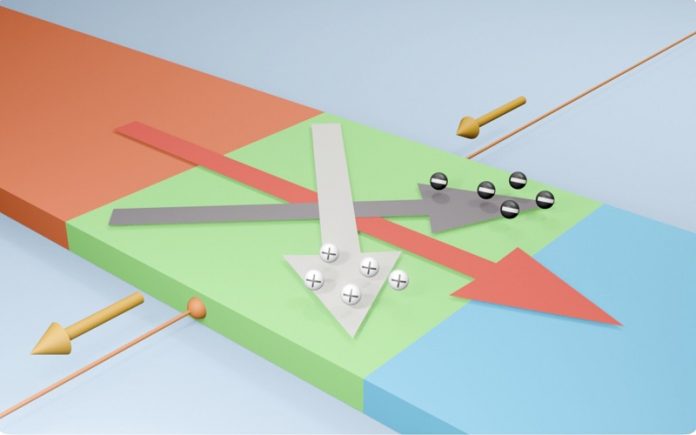
Researchers in Japan have made a breakthrough in energy technology by developing a novel way to turn heat into electricity using a material called tungsten disilicide (WSi₂).
This discovery could improve energy efficiency in industries, vehicles, and even remote power systems, offering new solutions to reduce waste and generate cleaner energy.
Thermoelectric materials are special substances that convert heat into electricity.
They are used in situations where waste heat, such as from car engines or industrial machinery, can be turned into usable power.
These materials also have potential applications in portable devices, remote sensors, and even satellites, where traditional power sources might not work.
Traditional thermoelectric devices generate electricity in the same direction as the heat flow.
These devices combine two types of materials—p-type and n-type—to strengthen the voltage output. However, this setup requires multiple connection points, which can lead to power loss due to increased electrical resistance.
A new type of device, called transverse thermoelectric devices, works differently.
Instead of generating electricity in the direction of the heat flow, they generate electricity perpendicular to it. This design is more efficient because it uses fewer connections, reducing power loss.
The key to making such devices lies in materials with a unique property called “axis-dependent conduction polarity” (ADCP), where they conduct positive charges in one direction and negative charges in another.
Until now, transverse thermoelectric effects (TTE) have been difficult to demonstrate in experiments.
However, a team of scientists led by Associate Professor Ryuji Okazaki from Tokyo University of Science has successfully achieved TTE using the semimetal tungsten disilicide (WSi₂). Their findings were published on November 13, 2024, in the journal PRX Energy.
WSi₂ is known for its ADCP property, but researchers had not been able to directly observe the TTE effect in this material before. Prof. Okazaki and his team combined physical experiments with computer simulations to explore the properties of WSi₂ in detail.
The researchers studied a single crystal of WSi₂ at low temperatures, measuring its thermoelectric power, electrical resistance, and thermal conductivity along two different axes. They discovered that WSi₂’s unique electronic structure is the reason behind its ADCP and TTE abilities.
Inside WSi₂, electrons (negative charge carriers) and holes (positive charge carriers) exist in different dimensions. Electrons form quasi-one-dimensional structures, while holes form quasi-two-dimensional structures.
This mixed-dimensional arrangement allows the material to conduct electricity differently depending on the direction, making it ideal for transverse thermoelectric devices.
By applying a temperature difference at a specific angle, the team was able to generate a voltage perpendicular to the heat flow—a direct demonstration of the TTE effect.
The researchers also noticed some variations in how WSi₂ conducts electricity between different samples.
Using advanced simulations, they found that these differences were caused by imperfections in the crystal structure of the material. This insight will help scientists fine-tune WSi₂ and make it more reliable for practical applications.
The team’s work not only highlights WSi₂ as a strong candidate for transverse thermoelectric devices but also provides valuable information for discovering other materials with similar properties.
These devices could lead to the development of advanced sensors that measure temperature and heat flow, as well as new ways to harness waste heat for power generation.
“Our results show that WSi₂ is a promising material for transverse thermoelectric devices,” says Prof. Okazaki. “We hope this research will inspire the discovery of other materials and lead to practical applications in sensors and energy conversion.”
By creating efficient ways to turn heat into electricity, this research paves the way for greener energy technologies and a more sustainable future.



